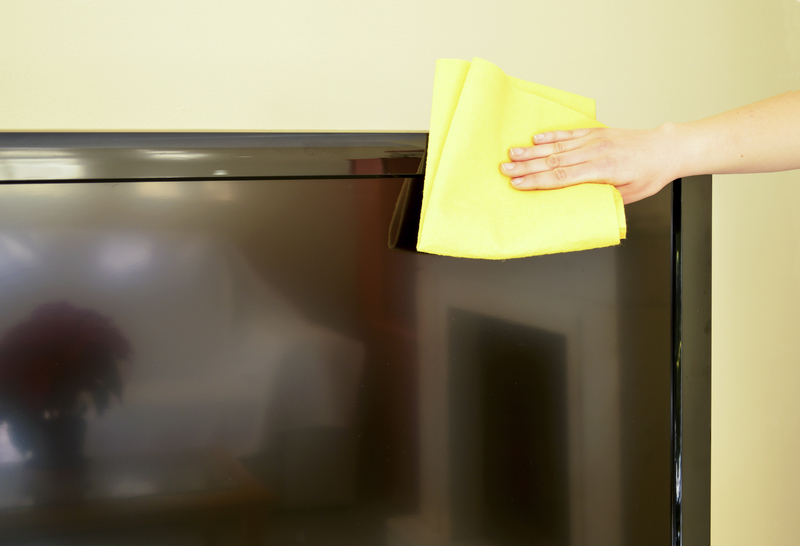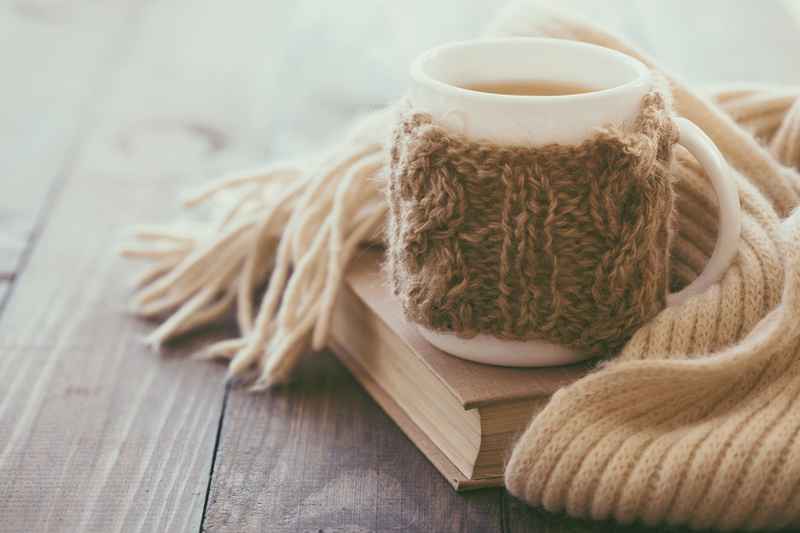Mastering the Art of Curtain Cleaning: Your Ultimate Guide
Posted on 27/06/2025
Mastering the Art of Curtain Cleaning: Your Ultimate Guide
Do your drapes look dull and lifeless? Have you been searching for ways to restore the freshness of your window coverings? If so, you're in the right place! Mastering the art of curtain cleaning not only rejuvenates your home's appearance but also extends the life of your curtains, making your space cleaner and healthier for everyone.
In this detailed guide, we'll walk you through the best practices, methods, and secrets to flawless curtain cleaning -- whether you're tackling stubborn stains or maintaining delicate fabrics. Ready to lift your drapery care to the next level? Read on for everything you need to know!
Why You Should Prioritize Regular Curtain Cleaning
Curtains act as a filter, trapping dust, allergens, odors, and sometimes even mold spores. Over time, these contaminants can accumulate, negatively impacting air quality in your home. Neglecting curtain cleaning can also diminish fabric colors and lead to premature wear and tear.
- Improves Indoor Air Quality: Regular dusting and washing remove pollen, pet hair, and pollutants.
- Maintains Aesthetic Appeal: Clean draperies help brighten a room and showcase your decor style.
- Prolongs Fabric Lifespan: Prevents the buildup of grit and dirt that could damage fibers.
- Prevents Allergies: Reduces triggers for asthma and hay fever.

Understanding Different Curtain Fabrics
Every curtain material demands slightly different care and attention. Before you begin cleaning, it's crucial to identify the fabric type, as this determines which cleaning technique is safe and effective.
Common Curtain Materials
- Cotton: Durable and easy to clean, but may shrink if not handled properly.
- Linen: Stylish and light; requires gentle handling due to its tendency to wrinkle.
- Polyester: Stain-resistant and hard-wearing; usually machine washable.
- Velvet: Adds luxury, but must be carefully spot cleaned or professionally handled.
- Silk: Delicate and prone to water damage; strongly recommended for dry cleaning only.
- Blend fabrics: May combine properties of different materials, so always check care labels.
Basic Curtain Cleaning Methods
1. Regular Curtain Dusting
- Use a vacuum cleaner with upholstery attachment once a week.
- Start at the top and work your way down to avoid re-depositing dust.
- For delicate or embroidered curtains, use a soft brush or lint roller.
2. Washing Curtains in the Machine
- Read the Care Label: Confirm machine washing is recommended.
- Select a gentle cycle with cold or lukewarm water and mild detergent.
- Remove hooks or rings to prevent tearing during the wash.
- Do not overload the washing machine.
3. Hand Washing Curtains
- Ideal for sheer, lace, or older fabrics.
- Submerge curtains in lukewarm water with a gentle detergent.
- Gently agitate the material by hand. Avoid harsh wringing or twisting.
- Rinse thoroughly until the water is clear.
4. Dry Cleaning Curtains
- Recommended for velvet, silk, and interlined drapes.
- Look for dry-clean-only instructions on the label.
- Entrust valuable or antique fabrics to professional dry cleaners.
Spot Cleaning and Stain Removal Techniques
Spills and marks are inevitable, but fast action can prevent permanent stains. Here's how:
- Blot, Don't Rub: immediately dab the stain with a clean, dry cloth to absorb excess liquid.
- Test Cleaners: Always try any stain remover on an inconspicuous area first.
- Mild Soap Solution: A mixture of water and a few drops of dish soap works for most spots.
- Stubborn Stains: For wine, ink, or pet accidents, consider a dedicated upholstery cleaner.
- Rinse and Dry: Use a damp cloth to remove any cleaner residue and air-dry.
Drying and Ironing Curtains Properly
How you dry your curtains after cleaning is just as important as how you wash them. Here are some expert curtain drying tips:
Air Drying
- Hang curtains back on the rod immediately after washing to minimize wrinkles.
- Ensure adequate airflow to prevent mildew; open windows or use a fan if indoors.
- Avoid direct sunlight for delicate fabrics to prevent fading.
Tumble Drying
- Use only if the care label permits -- usually appropriate for cotton and polyester blends.
- Opt for the lowest heat setting to avoid shrinkage.
- Remove curtains while slightly damp to iron out creases easily.
Ironing or Steaming
- Iron curtains on the reverse side, using the correct heat setting for the fabric.
- For heavy or pleated curtains, a handheld steamer can smooth out wrinkles without risk of burning.
Special Tips for Delicate and Designer Curtains
Expensive or vintage curtains require extra care. When in doubt, always seek professional help to avoid mishaps. For hand-embroidered, silk, or antique draperies, specialized cleaning preserves both color and structure.
- Patch Test: Check cleaning products on a hidden seam first.
- Spot Clean Often: Attend to dust and marks regularly to avoid the need for rigorous cleaning.
- Use Muslin Bags: When handwashing, place delicate curtains in a muslin bag for extra protection.
Seasonal Deep Cleaning: When and How?
Most curtain fabrics benefit from comprehensive washing or deep cleaning every 6-12 months. This ensures dust mites, allergens, and pollution particles are thoroughly removed.
- Spring cleaning is the perfect time for curtain maintenance.
- In high-pollution or high-traffic homes, increase frequency to every 3-6 months.
- If someone suffers from allergies in your household, monthly vacuuming is recommended.
Common Mistakes to Avoid in Curtain Cleaning
Avoid the following pitfalls to become a true curtain cleaning master:
- Failing to check the fabric care label before cleaning.
- Using bleach or harsh chemicals on colored or delicate curtains.
- Leaving wet curtains bundled, which can lead to mold and mildew growth.
- Ironing at too high a temperature, causing burnt spots or fabric melt.
Essential Curtain Cleaning Tools and Products
Equipping yourself with the right curtain cleaning supplies makes the process smoother and more effective. Here's what you'll need:
- Vacuum cleaner with soft brush or upholstery attachments
- Microfiber cloths and lint rollers
- Handheld steamer for wrinkles and sanitizing
- Mild liquid detergent (free from harsh chemicals and bleaches)
- Spot cleaning sprays, particularly those safe for upholstery
- Stain removers for stubborn marks
- Iron with adjustable settings or steamer
- Gentle laundry bags for machine washing delicates
Frequently Asked Questions About Curtain Cleaning
How often should I clean my curtains?
Aim for a seasonal deep cleaning (every 6-12 months) with regular dusting and spot cleaning in between. In households with smokers, pets, or allergies, more frequent cleaning is advisable.
Can I put my curtains in the washing machine?
Most cotton, polyester, or synthetic blends are machine washable, but avoid this method for silk, velvet, or heavily embroidered fabrics. Always check the manufacturer's instructions.
What's the best way to eliminate odors from curtains?
Airing out curtains in fresh air, vacuuming regularly, and using fabric refreshing sprays (tested first on a discreet area) helps banish unwanted smells.
How do I prevent curtains from shrinking?
Wash in cold water on a gentle cycle, avoid excessive tumbling, and air-dry whenever possible. Never use hot water unless specified safe by the care label.
Should I hire a professional for curtain cleaning?
For expensive, delicate, or interlined curtains, professional cleaning is often the safer choice. Pros have the tools and experience to manage complex fabrics without causing damage.
Maintaining Pristine Curtains: Pro Tips
Keep your drapes fresh and beautiful for years with these expert maintenance tips:
- Dust or vacuum every 1-2 weeks.
- Spot clean stains and marks promptly.
- Rotate curtains (if possible) in rooms exposed to strong sunlight to avoid uneven fading.
- Use tiebacks or holdbacks to prevent constant touching and grime at the edges.
- Protect against moths by placing cedar blocks or lavender sachets nearby.
- Consider periodically changing lining to increase lifespan and insulation.

The Benefits of Mastering the Art of Curtain Care
- Healthier Home: Cleaner air and fewer allergens.
- Extended Drapery Life: Proper care staves off aging and fabric breakdown.
- Consistent Beauty: Maintain vibrant colors and elegant folds year-round.
- Cost Savings: Prolonged curtain lifespan means fewer replacements.
By following this ultimate guide to curtain cleaning, you can enjoy all these benefits while creating a brighter, healthier, and more inviting living environment.
Conclusion: Make Curtain Cleaning a Routine, Not a Chore
Now that you've unlocked the secrets to mastering the art of curtain cleaning, you're ready to tackle dust, odors, and stains with confidence. Remember, understanding your curtain material and using proper cleaning techniques is crucial for lasting results. With a bit of effort and regular maintenance, your curtains will look as stunning as the day you hung them--adding style and freshness to your home for many years to come.
Take charge of your home's comfort and appeal today by making curtain cleaning a regular part of your housekeeping routine. If you ever need help, don't hesitate to reach out to professional curtain cleaning services for expert assistance.
Have any favorite tips or curtain cleaning hacks? Feel free to share your ideas and questions in the comments below!




